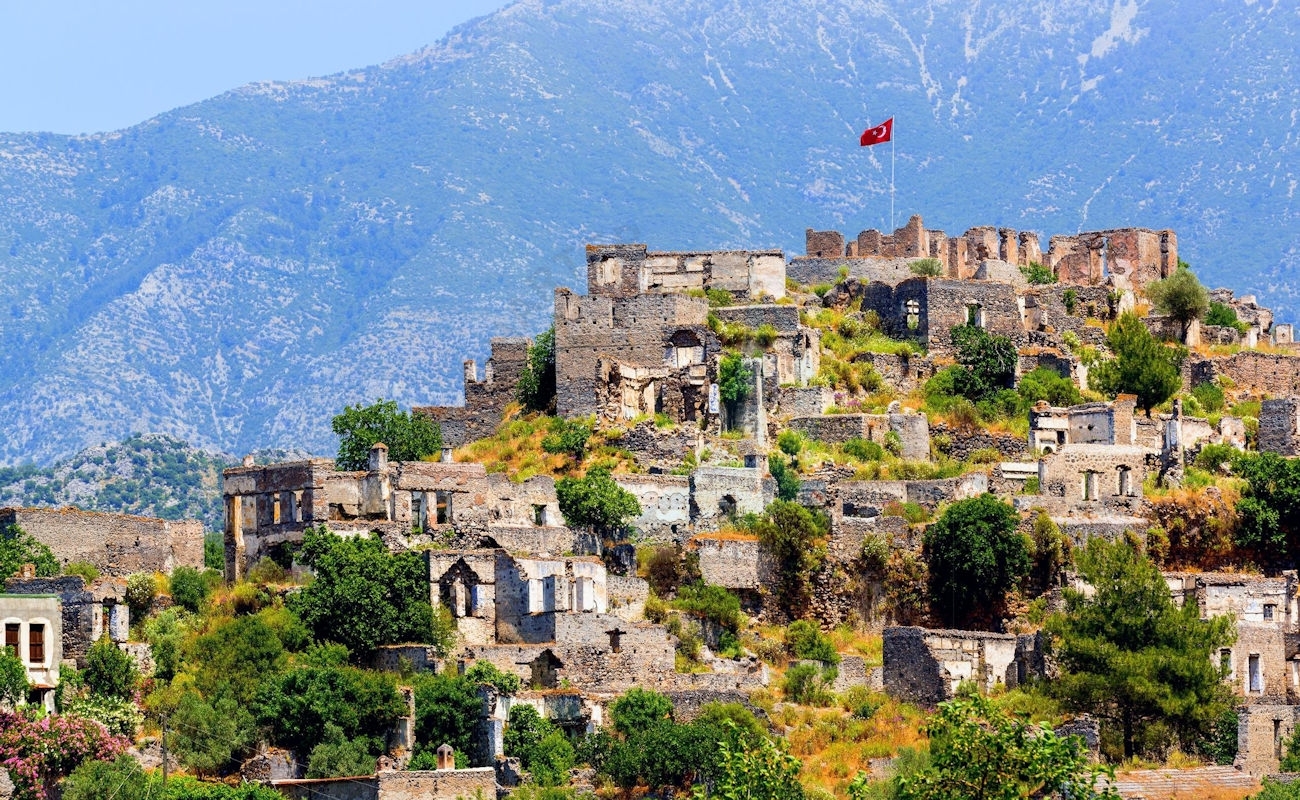
Kaya Village: A Captivating Look into the Past
Kaya Village is a neighbourhood located in the municipality and district of Fethiye, Mugla Province, Turkey. Its population, as of 2022, amounts to 975. Situated at a distance of 8km south of Fethiye, Kayakoy is largely deserted. During the ancient Greek era, it was referred to as Karmylessos, which was then shortened to Lebessos and pronounced as Leivissi in modern Greek. The town name underwent linguistic changes from Ancient Greek to Koine Greek during the Roman period, and then to Byzantine Greek in the Middle Ages. Eventually, it acquired its current Modern Greek name, which was used by the townspeople up until their final evacuation in 1923.
During late antiquity, the local population had adopted Christianity and, after the East-West Schism with the Church of Rome in 1054 AD, they identified as Greek Orthodox Christians. The Greek-speaking Christians and their Turkish-speaking Muslim Ottoman rulers coexisted peacefully from the end of the tumultuous Ottoman takeover of the region in the 14th century until the early 20th century. However, after the Greco-Turkish War of 1919–1922, and the resulting Treaty of Lausanne in 1923, the Greek Orthodox community was forced to leave Livissi.
However, the slaughter of Greeks and other Christian minorities in the Ottoman Empire during World War I (1914-1918) resulted in the near complete depopulation of the town’s 6,500 Greek residents by 1918. The previous residents were stripped of their possessions and either sought refuge in Greece or perished in forced labour units under Ottoman rule.
Greco-Turkish War of 1919-1922
After these occurrences, in May 1919, Greece was permitted by the victorious Allies of World War I to occupy Smyrna, a city that had a significant Greek population. This action resulted in the Greco-Turkish War of 1919-1922, the eventual defeat of Greece, and the signing of the Treaty of Lausanne in 1923. The treaty included a protocol on the population exchange between Greece and Turkey. This protocol forbade the permanent return of any previous Greek Orthodox refugees to their homes in Turkey, including the Livissi refugees. Additionally, it required that any remaining Orthodox Christian citizens of Turkey evacuate their homes to Greece, with the exception of Greeks residing in Istanbul.
The treaty mandated Greece’s Muslim citizens to permanently leave Greece for Turkey, except for those residing in Greek Thrace. The Turkish state relocated a majority of these Greek Muslim populations to the now-vacant Greek Christian towns. However, these Turkish Muslims declined relocation to Kaya village, formerly known as Livissi due to prevalent rumors concerning the ghosts of Greeks killed in the area.
The museum village, now a preserved ghost town, comprises hundreds of dilapidated yet predominantly intact Greek-style houses and churches dispersed across a mountainside. It serves as an attraction for visiting tourists in Fethiye and the nearby Oludeniz area.
The village has no permanent inhabitants but is frequented by tour groups and roadside vendors peddling handmade crafts. A select few houses have been renovated and are occupied presently.
History
Kaya village, formerly known as Livissi predominantly dates back to the 18th century. Within the village and north of it in Gokce Cape, tombs in the Lycian style are discernible.
Lebessus is cited as a Christian diocese in the Notitia Episcopatuum of Pseudo-Epiphanius composed during the reign of the Byzantine Emperor Heraclius around 640, and in the similar early 10th-century document attributed to Emperor Leo VI the Wise, as a subordinate of the metropolitan see of Myra, the capital of the Roman province of Lycia, to which Lebessus belonged. As it is no longer a bishopric for residential purposes, the Catholic Church registers Lebessus as a titular see.
Kaya village, formerly known as Livissi may have served as a refuge for the residents of Byzantine Gemiler Island, shielding them from the threat of pirates. Subsequent to the destruction of nearby Fethiye, also known as Makri, by an earthquake in 1856 and a major fire in 1885, Livissi underwent a regeneration. Over 20 churches and chapels were erected in the town and the surrounding plain, including Taxiarhes – the ‘Upper’ church – and ‘Panayia Pyrgiotissa’ – the ‘lower’ church – as well as St. Anna and St. George. A majority of these structures remain standing to this day.
